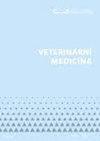Evaluation of Streptococcus species isolated from subclinical sheep mastitis by molecular methods and determination of virulence factors and antimicrobial resistance genes
IF 0.8
4区 农林科学
Q3 VETERINARY SCIENCES
引用次数: 0
Abstract
Streptococcus (S.) species are important pathogens that cause mastitis in sheep. The study aimed to examine Streptococcus species in sheep milk with subclinical mastitis, assessing their prevalence, antimicrobial resistance, and virulence genes. A total of 200 milk samples were collected from sheep farms in İzmir’s five districts. Out of 32 (28.6%) Streptococcus isolates identified by phenotypic methods, 25 were genotypically identified as S. uberis, 5 as S. agalactiae, and 2 as S. dysgalactiae. Disk diffusion was used to determine the antimicrobial resistance of the isolates. PCR was employed to identify antimicrobial resistance and virulence genes in the isolates. The highest resistance was found for cloxacillin (100%), and the highest sensitivity was found for florfenicol (84%). The most common resistance gene combination was tetM+tetS (3/32) for S. uberis in 9.4%. A total of five virulence genes were detected. GapC+sua (56.2%) constituted the most common gene pattern. The highest virulence gene gapC was detected in 78.1% (25/32) of the isolates. The cylE gene was not detected (0%) in the isolates. Streptococcus species may play a role in mastitis in sheep, emphasising the need for meticulous hygienic milking practices.亚临床绵羊乳腺炎链球菌的分子鉴定及毒力因子和耐药基因的测定
链球菌(s)种是引起乳腺炎inÂ羊的重要病原体。该研究旨在toÂ检测亚型乳腺炎羊奶链球菌inÂ,评估其患病率、抗菌素耐药性和毒力基因。AÂ共ofÂ从in İzmir的五个区羊场收集了200份牛奶样本。在of 32株(28.6%)链球菌分离株中,byÂ表型方法鉴定出25株为基因典型鉴定为as S. uberis, 5 as S.Â无乳型和2株as S.Â无乳型。采用纸片扩散法toÂ测定菌株的耐药性ofÂ。采用PCR技术toÂ鉴定菌株的耐药和毒力基因inÂ。耐药最高的是氯西林(100%),敏感性最高的是氟苯尼考(84%)。S. uberis最常见的耐药基因组合为tetM+tetS (3/32) in 9.4%。AÂ共检测到of 5个毒力基因。GapC+sua(56.2%)是最常见的基因模式。毒力最强的基因为gapC in 78.1% (25/32) ofÂ。未检出cylE基因(0%)inÂ。链球菌种类可能发挥aÂ作用inÂ乳腺炎inÂ羊,强调需要细致卫生挤奶的做法。
本文章由计算机程序翻译,如有差异,请以英文原文为准。
求助全文
约1分钟内获得全文
求助全文
来源期刊

Veterinarni Medicina
Veterinary Sciences-兽医学
CiteScore
1.30
自引率
0.00%
发文量
62
审稿时长
18-36 weeks
期刊介绍:
The journal Veterinarni Medicina publishes in English original papers, short communications, critical reviews and case reports from all fields of veterinary and biomedical sciences.
 求助内容:
求助内容: 应助结果提醒方式:
应助结果提醒方式:


